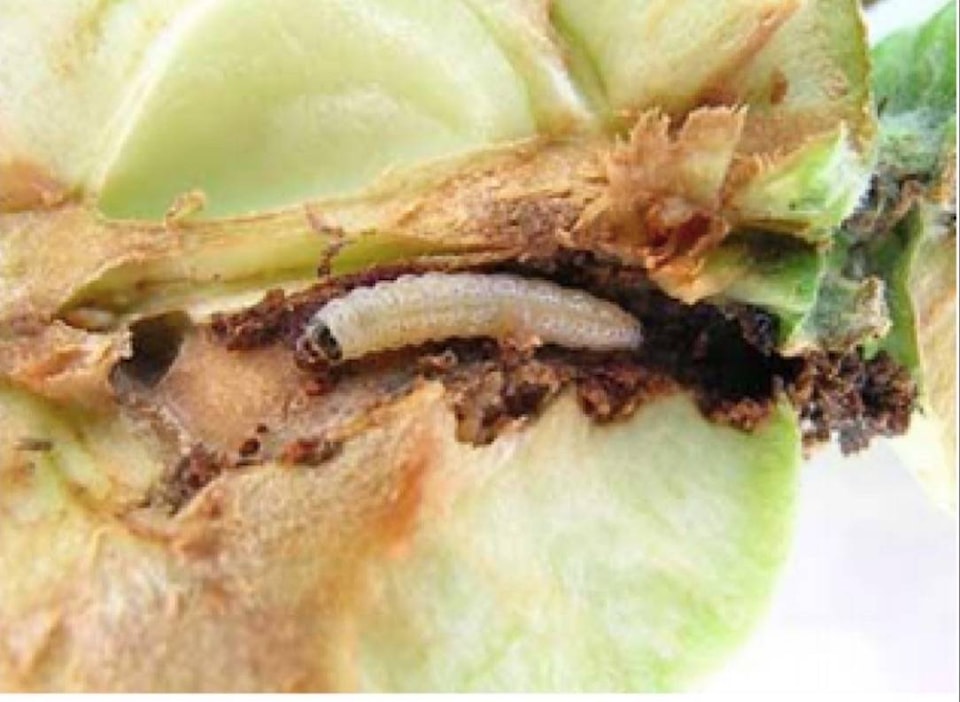It’s not a flame that moths are attracted to in the Okanagan, it’s farms.
That’s according to Melissa Tesche, general manager for the Okanagan-Kootenay Sterile Insect Release Program.
She recently shared that information with West Kelowna city council as part of a larger presentation about the insect program, which was established in the South Okanagan 17 years ago.
According to Tesche, the growth of the moth population has had an escalating impact on Okanagan farmers in recent years largely due to a changing climate.
READ MORE:Codling moths remain a problem for Okanagan apple growers
“The same reason that we’ve had hot and dry fire years for a number of years in a row, those same conditions are perfect for insect growth,” she said.
“(Warmer temperatures) let insects speed up their life cycle to the point where we’re able to see a whole other generation of coddling moth in the same summer.”
According to the organization’s website, after moths lay their eggs on pieces of fruit, baby moths hatch and then burrow their way into the inside of produce.
The insect then matures around the fruit before mating on surrounding produce the following year.
Tesche said the spread of moth infestation has never been more evident than now.
“With the rise in popularity from farmers markets and roadside stands, we’re seeing a lot of bin movement throughout the valley,” she said.
“The coddling moth can actually travel on those bins, which creates a perfect storm.”
Tesche said fruit stands have become more common throughout the Okanagan because farmers tend to make a bigger buck for their produce rather than selling it at local co-ops.
According to E-Fauna BC, there are approximately 2,000 different moth species throughout the province.
The codling moth was accidentally introduced into British Columbia from Europe in the early 1900s.
@connortrembley
connor.trembley@kelownacapnews.com
Like us on Facebook and follow us on Twitter.
